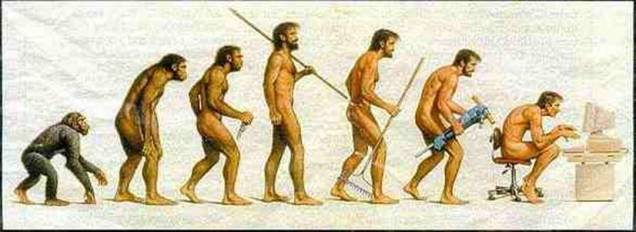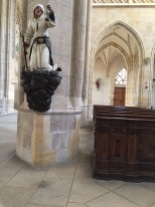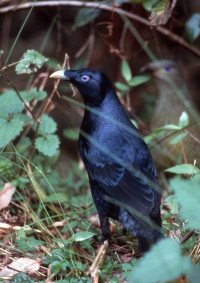Imagine my surprise when I passed through the door to see a little girl waiting. At first, I noticed her beautiful friendly smile. Her hair hung loosely around her shoulders, and her dress, which was a beautiful red colour, hung in tatters around her knees.
As I walked towards my room she skipped along beside me, chattering all the while. Her spark and enthusiasm rubbed off onto me and I suddenly knew that I was going to enjoy this time away in the Grotto.
I walked into my room and felt a cosy warm feeling. Through the french windows, I could see the beautiful gardens, overlooking the lake. The sun was gently sinking to the west and I knew that I was going to sleep well this night.
by Leonie Bryant
Responding to the call to join the Enchantress!

The basic theory of evolution is surprisingly simple. It has three essential parts:
- It is possible for the DNA of an organism to occasionally change, or mutate. A mutation changes the DNA of an organism in a way that affects its offspring, either immediately or several generations down the line.
- The change brought about by a mutation is either beneficial, harmful or neutral. If the change is harmful, then it is unlikely that the offspring will survive to reproduce, so the mutation dies out and goes nowhere. If the change is beneficial, then it is likely that the offspring will do better than other offspring and so will reproduce more. Through reproduction, the beneficial mutation spreads. The process of culling bad mutations and spreading good mutations is called natural selection.
- As mutations occur and spread over long periods of time, they cause new species to form. Over the course of many millions of years, the processes of mutation and natural selection have created every species of life that we see in the world today, from the simplest bacteria to humans and everything in between.
Billions of years ago, according to the theory of evolution, chemicals randomly organized themselves into a self-replicating molecule. This spark of life was the seed of every living thing we see today (as well as those we no longer see, like dinosaurs). That simplest life form, through the processes of mutation and natural selection, has been shaped into every living species on the planet.
Can such a simple theory explain all of life as we know it, explain the creative process?
The Soul Food Cafe is just one example of the truth of this simple theory. Explaining the evolution of Soul Food is a bit like explaining how one species could transform and become another.
Soul Food came into being when computers around the world began to talk to one another. It began as a simple writing directory run by one person and evolved, transformed into the complex site, still run by one person with the support of volunteers. The Soul Food Cafe spread over thousands of pages and was added to by hundreds of people.
In the early days, when the site was primarily a directory, students were encouraged to use Bravenet Forum as a place to publish responses to stimuli directly online. They delighted in seeing their work go into a public arena and enjoyed being able to show family and friends just how computer savvy they were.
As Soul Food began to house and preserve the work of students it began to morph into another shape. Prior to the advent of intuitive programs that removed the need to write HTML it, quite literally, took many hours to code pages and publish student work. Once we began using Bravenet Forums it was possible to copy work from this container and paste it into Student Folio pages within what was named the Student Lounge. Copying and pasting work onto templates dramatically reduced the workload and revealed new possibilities.
As the word about the nature and style of Soul Food spread via Yahoo Groups and email, artists were drawn to the site from all over the world and the site began to mutate and take on a life of its own. It became a place to inhabit rather than just a place to visit and then leave. The first shifts were subtle but with communication channels open and operating the whole thing began to take a new shape.
Once the blogging revolution took hold things really began to evolve and change. The advent of blogs, facilitating multiple users bought a whole new direction. Members of the Yahoo Group who were invited to slip through the portal and meet an Enchantress in The Cave of the Enchantress willingly came knocking on the door
I’ve walked the pathways
lost an hour dreaming by the waterway
launched my winged canoe
and floated past the great white mountain
flown across the sea
and painted a few dolphins during flight
but
when this morning I reached the silence of Umbria
I knew I could not go
into the cavern, or any place beneath the ground
unless I was allowed to take the sunshine with me
Now I have made my gate
and posted it twice
I can press its magic bell
and hope that the enchantress will let me in
with my box and hope that she will let me keep the light
as I wander the strange labyrinth
and seek direction from strangers
by Fran Sbrocchi
This Cave of the Enchantress was one of the first of Soul Food’s collaborative blogs. By 2010 The Soul Food Cafe had almost two hundred collaborative blogs, catering to different genres and concepts.

 This week we will be working with the Katharina Rapp’s Everyday Goddess Cards a friend lent me. With a delicious and slightly wicked sense of humour Rapp’s paintings take a light-hearted, yet compassionate look at the lives of everyday women. While her cards are out of production you can visit Studio Rapp in Castlemaine and immerse yourself in the world of this talented artist.
This week we will be working with the Katharina Rapp’s Everyday Goddess Cards a friend lent me. With a delicious and slightly wicked sense of humour Rapp’s paintings take a light-hearted, yet compassionate look at the lives of everyday women. While her cards are out of production you can visit Studio Rapp in Castlemaine and immerse yourself in the world of this talented artist.

 A book I strongly recommend that participants examine is ‘A Life Of One’s Own’ by Joanna Field (Marion Milner). In my mind, this is like the Period Log Progoff speaks of. Check out
A book I strongly recommend that participants examine is ‘A Life Of One’s Own’ by Joanna Field (Marion Milner). In my mind, this is like the Period Log Progoff speaks of. Check out 


 However, I do live in a house in George Street which has glass doors with images of Blue Gum Clippers of the kind they built in the Battery Point Ship Yards in Hobart.
However, I do live in a house in George Street which has glass doors with images of Blue Gum Clippers of the kind they built in the Battery Point Ship Yards in Hobart.




 Writing letters to ancestors is an activity many have worked with. High school English teachers give it as a writing assignment, websites have cropped up offering a place to publish them, and books are written about them. Sometimes they are written to famous people. Other times we write them to those we loved who have died or even to those with whom we have a troubled relationship.
Writing letters to ancestors is an activity many have worked with. High school English teachers give it as a writing assignment, websites have cropped up offering a place to publish them, and books are written about them. Sometimes they are written to famous people. Other times we write them to those we loved who have died or even to those with whom we have a troubled relationship.













 Emu is a powerful teacher and guide. It promotes spiritual excellence and achievement by encouraging diligence, hard work, respect and humility in the lives of those it visits. Emu demands the great application of time, energy and love to all spiritual pursuits and can guide those who seek knowledge down paths of wisdom.
Emu is a powerful teacher and guide. It promotes spiritual excellence and achievement by encouraging diligence, hard work, respect and humility in the lives of those it visits. Emu demands the great application of time, energy and love to all spiritual pursuits and can guide those who seek knowledge down paths of wisdom.

 Children have loved contemplating how to build up their artistic eyes and they have written with speed and passion that is a joy to watch. Words literally fall on to the page within just ten minutes! Ballads, lyrics, complex drawings, news reports, fiction and folklore have emerged on their pages and the excitement, as they share their work and cheer one another on is palpable.
Children have loved contemplating how to build up their artistic eyes and they have written with speed and passion that is a joy to watch. Words literally fall on to the page within just ten minutes! Ballads, lyrics, complex drawings, news reports, fiction and folklore have emerged on their pages and the excitement, as they share their work and cheer one another on is palpable.



 Because the turkey is closely associated with the spirit of the Earth, it is also symbolic of feminine energies at work in our lives. This animal has been revered in ancient traditions as a symbol of fertility and abundance.
Because the turkey is closely associated with the spirit of the Earth, it is also symbolic of feminine energies at work in our lives. This animal has been revered in ancient traditions as a symbol of fertility and abundance.



 Potoroos belong to a small family
Potoroos belong to a small family  It is not surprising that
It is not surprising that  The frilled lizard grows to around 45-90cm in length, about two-thirds of which is tail. It has a vivid yellow mouth and a large extendible frill gathered about the neck and under throat. The combination of the gaping mouth and the wide, brightly coloured frill provide an intimidating sight to any potential predator. It frequently runs at speed on two legs to escape danger, quickly climbing the nearest tree to safety. Their colour can be brown or grey with the frill being lighter and often tinged with orange or reddish-brown. Males are bigger than females and have a more robust appearance. There are two long, pointed canine-like teeth present in the lower jaw, which can inflict a painful bite.
The frilled lizard grows to around 45-90cm in length, about two-thirds of which is tail. It has a vivid yellow mouth and a large extendible frill gathered about the neck and under throat. The combination of the gaping mouth and the wide, brightly coloured frill provide an intimidating sight to any potential predator. It frequently runs at speed on two legs to escape danger, quickly climbing the nearest tree to safety. Their colour can be brown or grey with the frill being lighter and often tinged with orange or reddish-brown. Males are bigger than females and have a more robust appearance. There are two long, pointed canine-like teeth present in the lower jaw, which can inflict a painful bite.